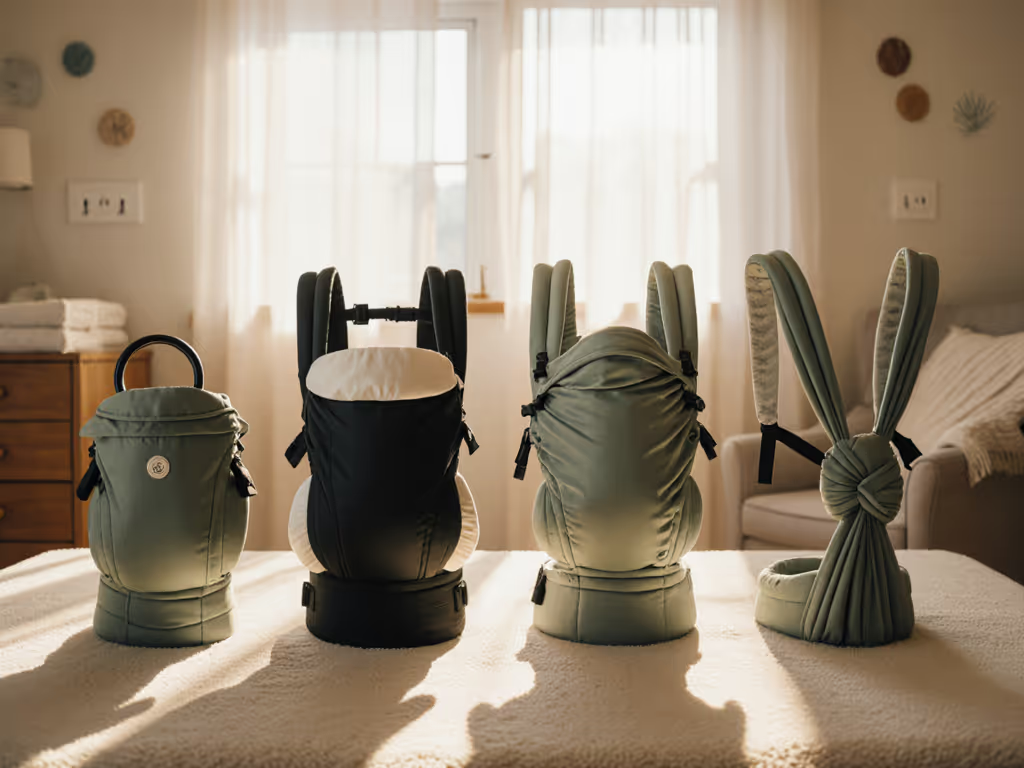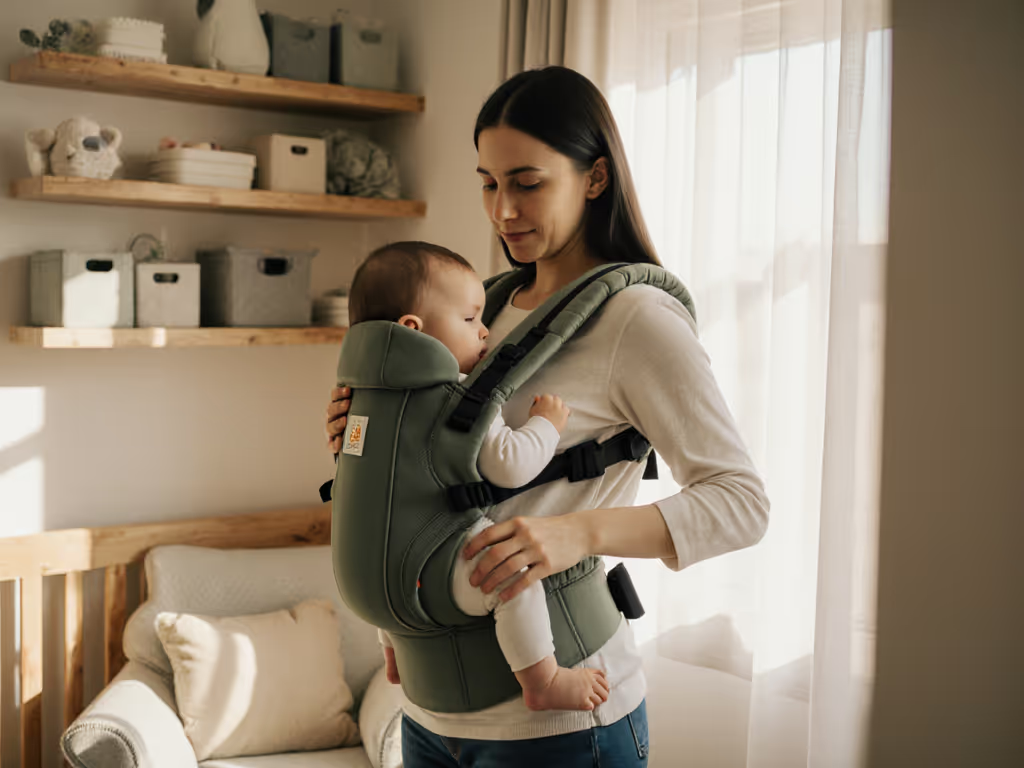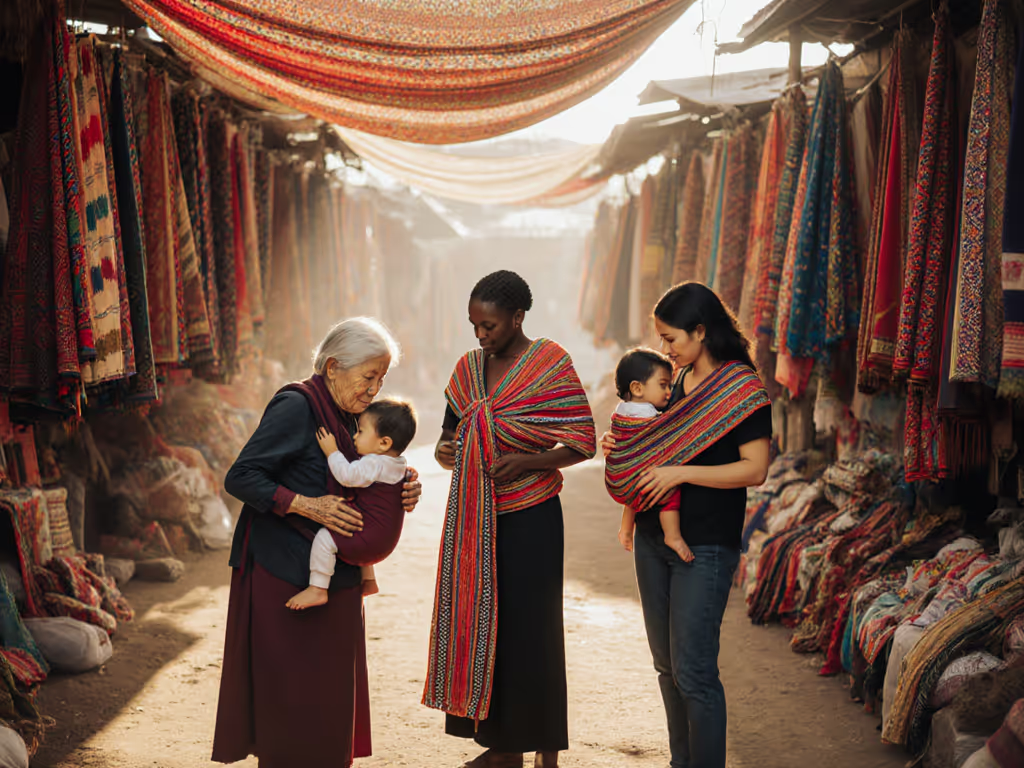
Role of Baby Carriers: Everything You Need to Know
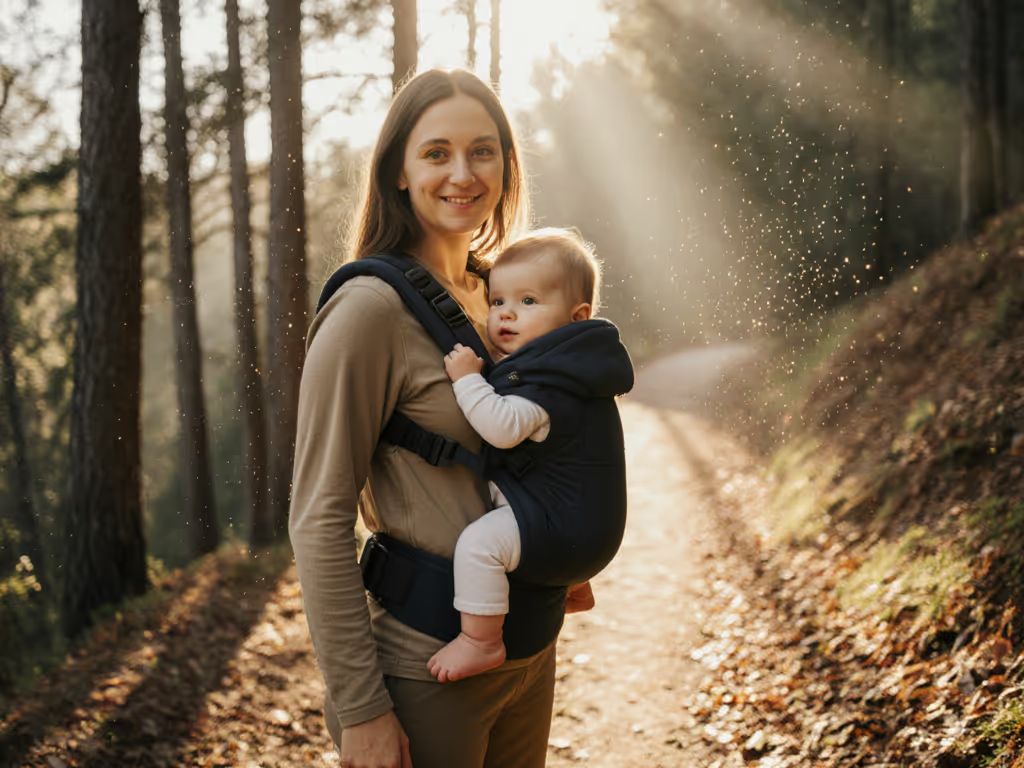
Did you know that babies who are carried regularly cry up to 43 percent less? Many parents rely on baby carriers not just for convenience, but to strengthen the bond with their child and support healthy development. Choosing the right carrier can shape everything from a baby's comfort to a parent's freedom, offering a blend of practical and emotional benefits that make daily life smoother and more connected.
Key Takeaways
| Point | Details |
|---|---|
| Purpose of Baby Carriers | Baby carriers enable hands-free transportation, fostering emotional and physical bonds between caregiver and child while supporting developmental processes. |
| Types of Carriers | Various carrier types, including wraps, ring slings, soft structured carriers, and mei tai, serve different needs based on baby age and caregiver lifestyle. |
| Development Benefits | Proper babywearing promotes physical health through correct positioning and supports emotional and cognitive growth via close contact and interaction. |
| Safety Guidelines | Adhere to TICKS safety guidelines and select quality carriers to ensure proper positioning and infant protection during use. |
Defining Baby Carriers and Their Purpose
Baby carriers are specialized textile devices designed to securely transport infants and young children while keeping caregivers' hands free. Rooted in centuries-old traditions across global cultures, these ingenious tools transform how parents and guardians interact with their children during everyday activities.
At its core, a baby carrier serves multiple critical functions beyond simple transportation. Babywearing enables close physical contact between caregiver and child, which supports crucial developmental processes. By keeping babies positioned close to the body, carriers facilitate:- Emotional bonding through consistent skin-to-skin contact- Easier monitoring of infant's breathing and movements- Hands-free mobility for parents and caregivers- Natural support for infant's developing muscular and skeletal systems
The physiological benefits extend far beyond convenience. Research demonstrates that babies carried in appropriate carriers experience reduced stress, enhanced neurological development, and increased feelings of security.
For caregivers, baby carriers offer practical solutions that support active lifestyles while maintaining intimate connections with their children.
Modern baby carriers come in various designs tailored to different needs and preferences. From wrap-style carriers that distribute weight evenly to structured options with precise adjustments, each type addresses specific parental requirements while prioritizing infant comfort and safety. The fundamental purpose remains consistent: creating a secure, nurturing environment that supports both caregiver and child's physical and emotional well-being.
Popular Types of Baby Carriers Compared
Baby carrier types are as diverse as the families who use them, each offering unique advantages for different lifestyles and infant ages. Understanding the nuanced characteristics of each design helps parents select the most appropriate carrier for their specific needs.
The primary carrier categories include: - Wraps: Versatile fabric pieces providing maximum skin-to-skin contact, ideal for newborns and smaller infants- Ring Slings: Quick-adjust, lightweight options perfect for short carrying periods and hot climates- Soft Structured Carriers (SSC): Structured designs with padded straps and waistbands, offering excellent weight distribution for longer carrying sessions- Mei Tai: Traditional Asian-style carriers combining fabric wrap flexibility with structured support, suitable for multiple carrying positions
Here's a comparison of the most popular baby carrier types and their key features:
| Carrier Type | Best For | Key Benefits | Notable Drawbacks |
|---|---|---|---|
| Wraps | Newborns<br>Small infants | Maximum skin-to-skin<br>Highly adjustable | Learning curve<br>Can get warm |
| Ring Slings | Short trips<br>Hot climates | Quick to adjust<br>Lightweight | One-shoulder carrying<br>Limited support for long use |
| Soft Structured Carriers (SSC) | Longer outings<br>Older babies | Excellent weight distribution<br>Multiple positions | Bulkier<br>May be less adjustable for tiny babies |
| Mei Tai | Versatility<br>Toddlers | Combines structure and flexibility<br>Multiple carrying positions | Requires tying<br>Less padding than SSC |
Each carrier type presents distinct ergonomic considerations. Stretchy wraps work wonderfully for tiny babies, offering incredible closeness and adaptability. Woven wraps provide more structure and can support older infants and toddlers. Soft structured carriers shine in versatility, accommodating multiple carrying positions and distributing weight across the caregiver's body for extended comfort.
Beyond individual preferences, parents should consider factors like infant age, physical development, personal comfort, and intended use when selecting a carrier. Some carriers excel in specific scenarios - ring slings for quick grocery trips, structured carriers for hiking, wraps for newborn bonding. The goal remains consistent: finding a carrier that supports both caregiver mobility and infant security while promoting healthy physical and emotional development.
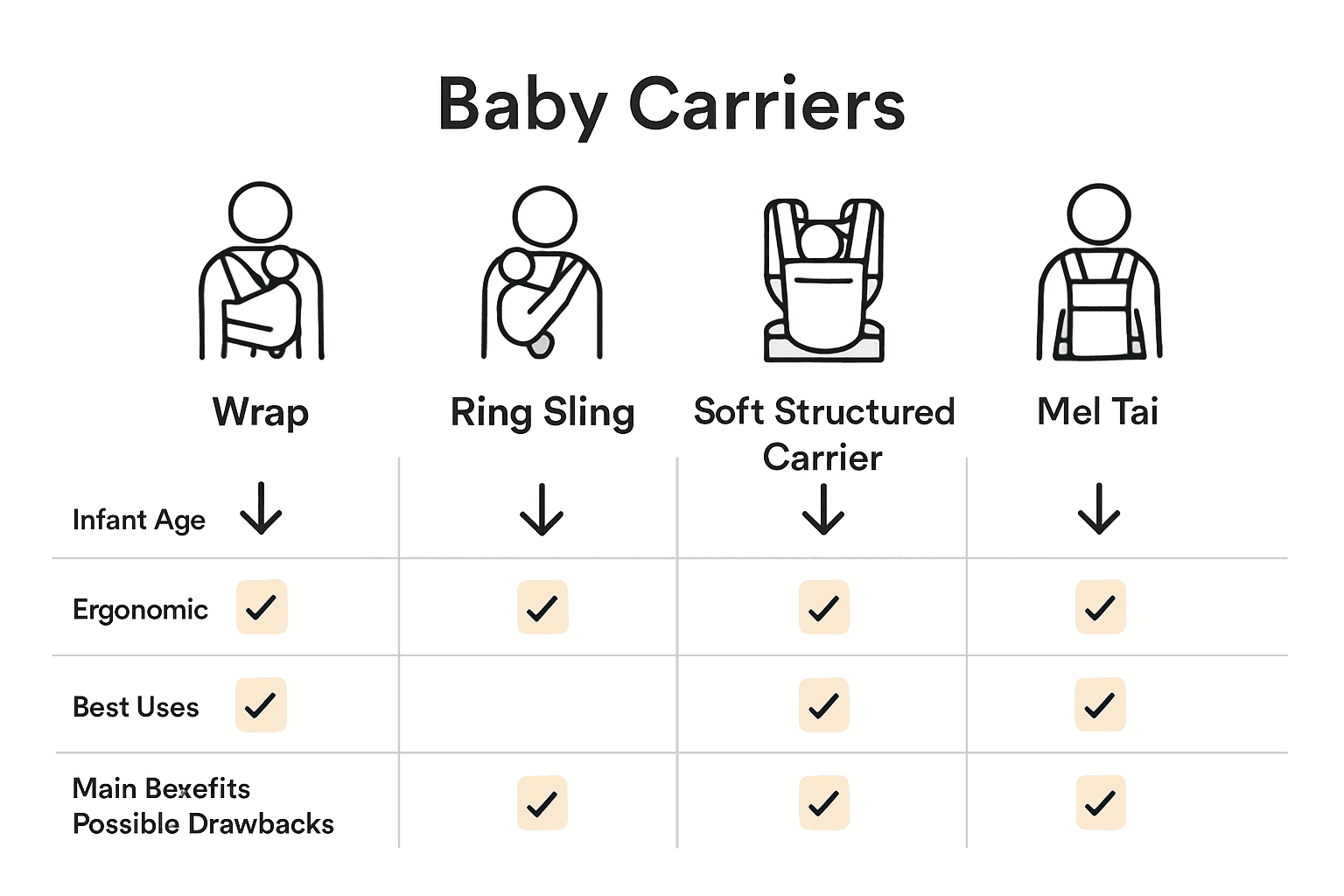
How Baby Carriers Support Healthy Development
Baby carriers are more than just convenient transportation devices - they are powerful tools that actively contribute to an infant's physical, cognitive, and emotional development. By creating a secure, close environment that mimics the safety of the womb, carriers support critical developmental milestones in profound and measurable ways.
Physical development receives particular benefits from proper babywearing. Optimal carrier positioning ensures healthy hip and spine alignment, with recommended designs maintaining babies in a natural "M" posture where knees are higher than their bottom. This positioning:- Prevents hip dysplasia risk- Supports natural musculoskeletal growth- Allows natural movement and muscle development- Promotes proper spine curvature
Emotional and neurological development equally benefit from consistent carrier use. Skin-to-skin contact through carriers triggers hormonal responses that reduce infant stress, regulate heart rate, and enhance bonding. Babies experience increased security, which translates to improved emotional regulation, reduced crying episodes, and enhanced trust in caregivers. Research in kangaroo care demonstrates that consistent close contact supports neurological development, improves sleep patterns, and helps infants feel more integrated with their environment.
Beyond individual developmental benefits, baby carriers create a dynamic learning environment. By keeping infants close, they observe adult interactions, facial expressions, and environmental stimuli at eye level. This proximity accelerates language acquisition, social understanding, and cognitive processing, transforming carriers into mobile learning platforms that support comprehensive childhood development.
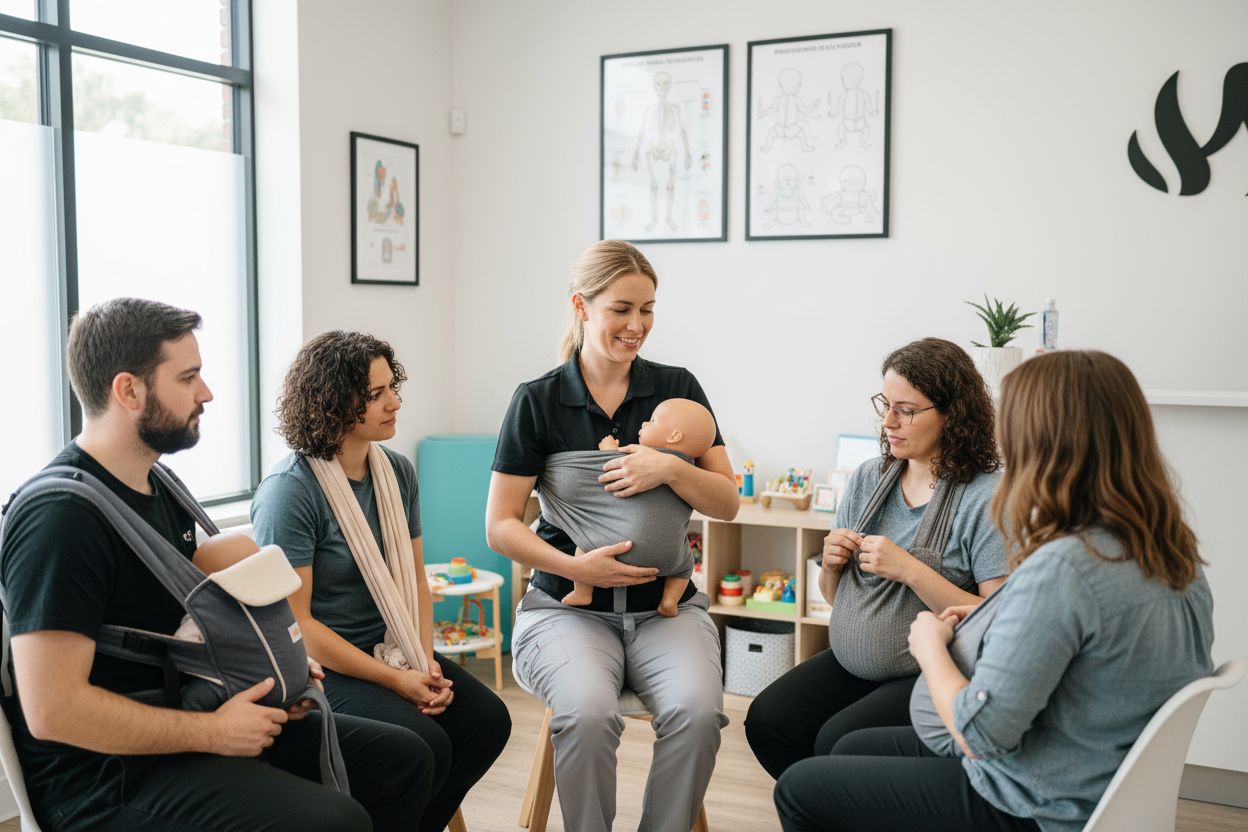
Safety Guidelines and Positioning Tips
Baby carrier safety is paramount, requiring careful attention to positioning, material quality, and infant's physical condition. New parents must understand that proper carrier use goes beyond convenience - it directly impacts infant health and protection.
The TICKS rule provides a fundamental framework for safe babywearing, encompassing critical safety parameters:- Tight: Carrier should fit snugly against the caregiver's body- In view: Baby's face must always be visible- Close enough to kiss: Head should be close enough to easily monitor breathing- Keep chin off chest: Ensure clear airway and prevent breathing restrictions- Supported back: Maintain natural spine alignment and prevent slumping
Beyond the TICKS guidelines, additional critical safety considerations include:- Selecting carriers with sturdy, high-quality materials- Checking weight and age recommendations for each carrier type- Ensuring baby can move arms and legs freely- Avoiding carriers that force unnatural body positions- Regularly inspecting carrier for wear and tear- Learning proper positioning techniques from certified professionals
For newborns and younger infants, extra precautions are crucial. Always ensure the carrier provides proper head and neck support, maintains a natural "M" seated position, and allows for easy breathing. Watch for signs of discomfort, overheating, or restricted movement. Regular practice and careful observation will help caregivers develop confidence in safe, comfortable babywearing techniques that protect both infant and caregiver.
Choosing the Right Carrier for Your Needs
Selecting the ideal baby carrier requires thoughtful consideration of multiple factors beyond simple aesthetics. Parents must evaluate their lifestyle, physical capabilities, infant's age and development, and personal comfort to find the most suitable carrying solution.
Key selection criteria include:- Lifestyle compatibility: Consider daily activities and movement patterns- Physical comfort: Assess weight distribution and personal ergonomic needs- Infant age and development: Match carrier design to baby's current stage- Climate and environment: Choose breathable materials for different temperatures- Budget constraints: Balance quality with affordable options- Ease of use: Prioritize carriers with simple adjustment mechanisms
Different carrier styles excel in specific scenarios. Stretchy wraps work wonderfully for newborns, providing incredible closeness and adaptability. Soft structured carriers shine for active parents needing more robust support during longer carrying periods. Ring slings offer quick, lightweight solutions for short trips and hot climates, while Mei Tai carriers provide a versatile middle ground with traditional design principles.
Ultimately, the perfect carrier feels like an extension of yourself - comfortable, intuitive, and supportive. Expect a learning curve as you and your baby adjust to new carrying techniques. Many parents find value in trying multiple carrier styles, recognizing that preferences may shift as their child grows. Prioritize safety, comfort, and the unique bond that develops through close, supportive physical contact.
Take the Guesswork Out of Babywearing: Find the Best Fit for You
Choosing the right baby carrier can be overwhelming, especially when safety, comfort, and healthy development are at stake. The article highlighted real challenges parents face, from navigating types of baby carriers to understanding safe positioning and achieving the optimal blend of closeness and support. If you are worried about picking the perfect carrier for your lifestyle or want to be sure your choice will nurture your child's growth, you are not alone. The risks of discomfort, improper fit, or safety hazards are real, and making an informed decision early on matters for your peace of mind and your baby's wellbeing.
Take the next step for your family and get clarity with resources backed by evidence. Visit Caregiver Carry for tailored guides, independent carrier reviews, and essential safety checklists. If you want to learn more about proper positioning and step-by-step safety, explore our dedicated information on safe babywearing practices. Do not let uncertainty guide your babywearing journey. Make your choice with confidence today by starting at Caregiver Carry.
Frequently Asked Questions
What are baby carriers and what purpose do they serve?
Baby carriers are textile devices that securely transport infants and young children, allowing caregivers to keep their hands free. They promote close physical contact, emotional bonding, and provide practical solutions for caregivers during daily activities.
What are the different types of baby carriers, and what are their key features?
The main types of baby carriers include wraps, ring slings, soft structured carriers (SSC), and Mei Tai. Wraps are adjustable and ideal for newborns, ring slings offer quick adjustments for short trips, SSC are structured for long outings with older babies, and Mei Tai combines elements of wraps and structured carriers for versatility.
How do baby carriers support healthy development in infants?
Baby carriers support infants' physical, cognitive, and emotional development by providing optimal positioning, which ensures proper hip and spine alignment. They encourage skin-to-skin contact that reduces stress and fosters emotional security, while also creating a dynamic learning environment as infants observe their caregivers closely.
What safety guidelines should I follow when using a baby carrier?
Follow the TICKS rule: ensure the carrier is tight, the baby is in view, they can be kissed easily, their chin is off their chest, and their back is supported. Additionally, use high-quality materials, check weight recommendations, and ensure the baby can move freely without unnatural positions.


